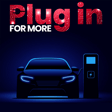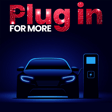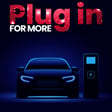
The TELO Truck - An Electric Solution For An Urban Problem
Welcome to the Plug In For More podcast! Mike, Tom, and Bryant are here to help you on your journey to an Electric vehicle future. Each episode we discuss current events, trends, and a specific topic of education related to EV's. We bring together a diverse experience set, and pair it with guests who are experts in the field. For even more information on EV's, check out www.EVUniverse.com.
In this episode, Tom sits down with Jason Marks and Forrest North who are the Co-Founders of the TELO Truck. The TELO truck is a fresh take on the modern pick-up, designed to thrive in an urban environment. Jason and Forrest's passion is contagious and we are excited for their dream to come to fruition. For more on the TELO Truck, check out their website; www.telotruck.com
Be sure to follow PIFM on our various social media platforms, for more exciting content on EV’s Instagram: https://www.instagram.com/pifm_podcast/ Facebook: https://www.facebook.com/PIFMPodcast


